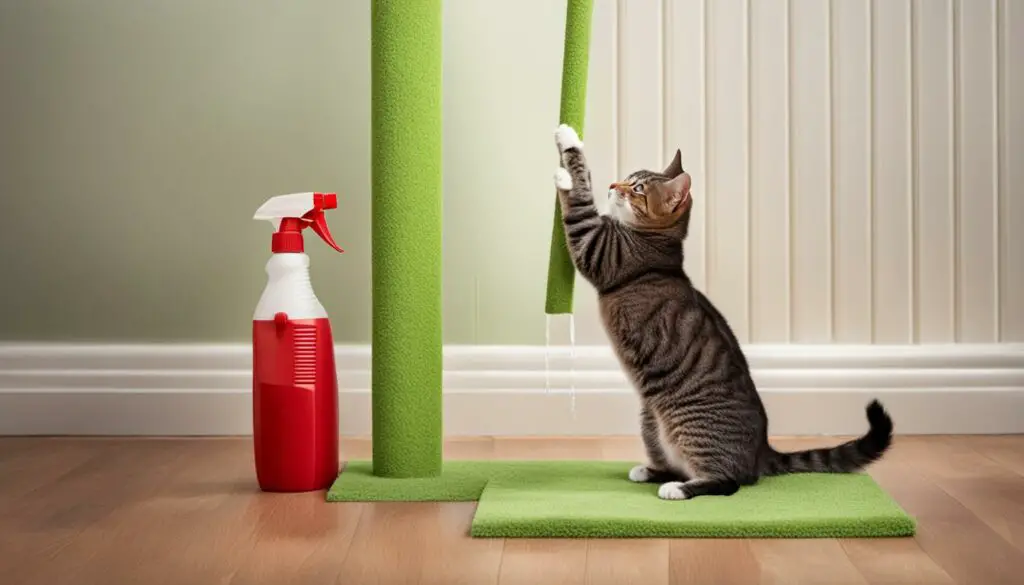Are you tired of your cat scratching up your walls? Don’t worry, I’ve got you covered! In this article, I will delve into the world of cat scratching behavior and provide you with effective techniques to prevent and redirect this behavior. So, let’s get started!
Scratching is a natural behavior for cats, but it can be frustrating when they choose your walls as their scratching posts. Understanding why cats scratch and applying the right training techniques can help redirect their behavior and save your walls from further damage.
Key Takeaways:
- Scratching is a natural behavior for cats
- Understanding the reasons behind scratching can help prevent it
- Redirecting scratching behavior is possible through proper training techniques
- Provide appropriate alternatives to satisfy your cat’s scratching needs
- Consistency and positive reinforcement are key in stopping cats from scratching walls
Why Do Cats Scratch Walls?
Cats scratching walls is a common behavior that can leave owners puzzled and frustrated. However, understanding the reasons behind this behavior can help us address it effectively. There are several motivations that drive cats to scratch walls, including exercise, stress relief, and territory marking.
Scratching serves as a form of exercise for cats, allowing them to stretch their bodies and maintain muscle tone. It also provides an opportunity for them to relieve stress and release pent-up energy. By scratching, cats can engage in a natural behavior that helps them stay physically and mentally stimulated.
Another reason cats scratch walls is to mark their territory. Cats have scent glands in their paws, and when they scratch a surface, they leave behind their scent, signaling to other cats that the area is claimed. This behavior is a way for cats to establish their presence and assert their dominance in their environment.
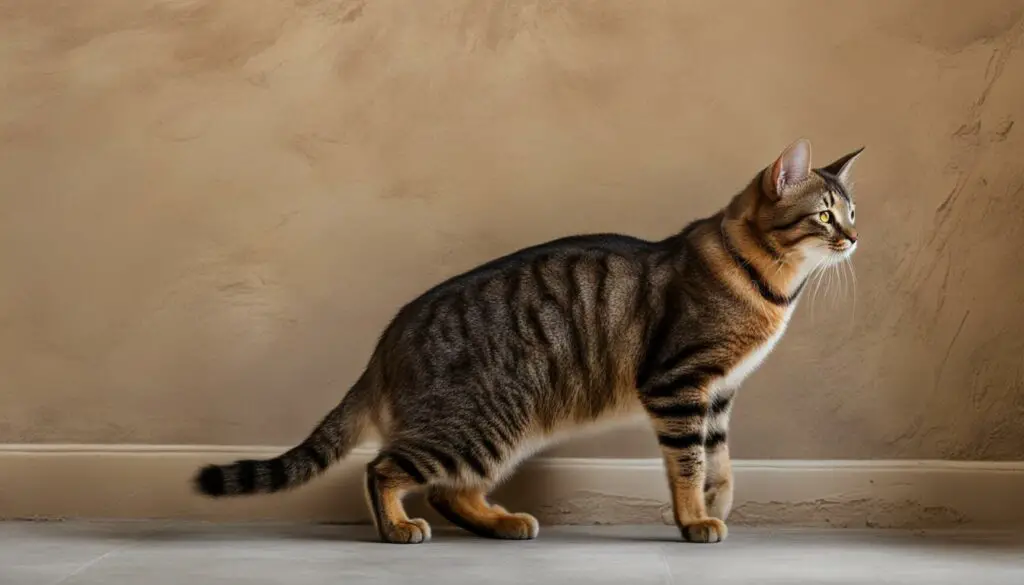
Understanding these motivations is crucial in redirecting a cat’s scratching behavior. By providing alternative outlets for exercise and stress relief, such as scratching posts and interactive toys, we can discourage cats from scratching walls. Additionally, creating designated areas for scratching and providing vertical and horizontal scratching surfaces can help satisfy a cat’s need to mark their territory without damaging our walls.
Reasons Cats Scratch Walls After Feeding
After a meal, some cats may exhibit scratching behavior on walls. Understanding the reasons behind this behavior is key to addressing it effectively. There are two main reasons why cats may scratch walls after feeding: picky eating and territorial marking.
Picky Eating
Cats can be finicky eaters, and if they are dissatisfied with their food, they may express their displeasure by scratching the walls. This behavior is their way of communicating their dissatisfaction with the meal provided. To address picky eating-related scratching, it is essential to evaluate the cat’s diet and make changes if needed. Trying different brands or flavors of cat food and observing the cat’s response can help find a more suitable option that satisfies their taste preferences.
Territorial Marking
Another reason cats scratch walls after feeding is to mark their territory. Cats have scent glands in their paws, and scratching releases pheromones that help them establish and maintain their territory. This behavior can be more common in multi-cat households where cats may try to assert their dominance. Providing separate feeding areas for each cat can help alleviate territorial marking-related scratching. Ensuring each cat has their designated space to eat reduces the need for them to mark their territory.
By addressing picky eating and territorial marking, cat owners can help reduce wall scratching after feeding episodes. Understanding the underlying reasons for this behavior is the first step in redirecting it and creating a harmonious environment for both the cat and its owner.
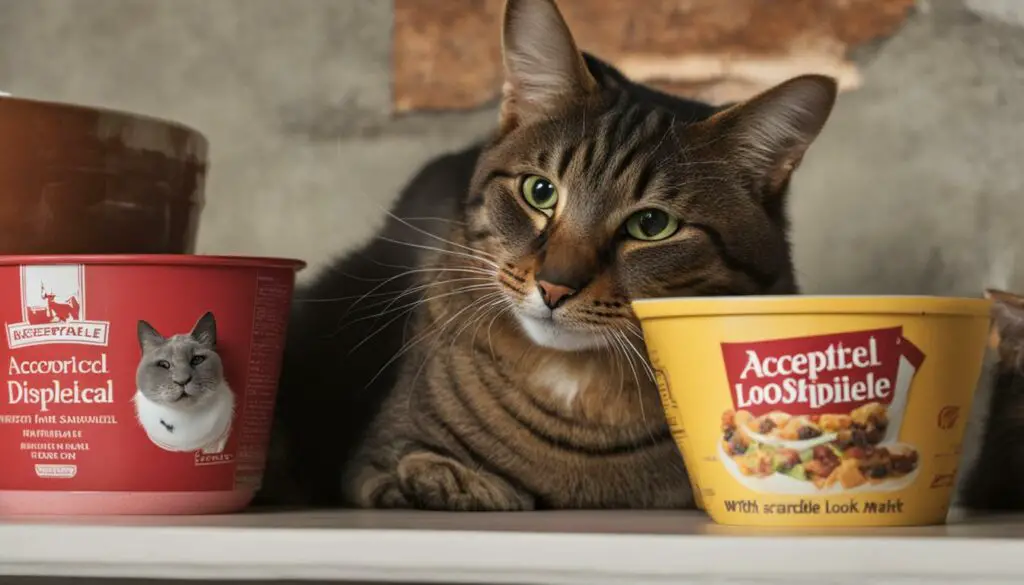
Reasons Cats Scratch Walls Around Litter Box
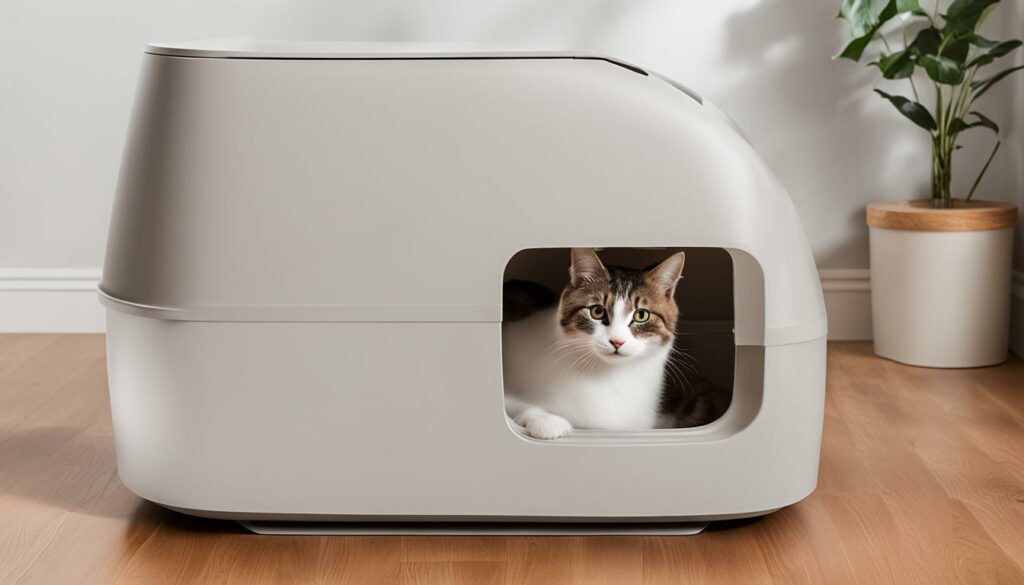
When cats scratch walls around the litter box, it can indicate a few different reasons. One common reason is the need for cleanliness. Cats have a natural instinct to cover their waste, and scratching the walls around the litter box can serve as a way for them to clean their paws. It helps them remove any litter particles or dirt that may have stuck to their paws during their time in the litter box.
Another reason for wall scratching around the litter box is related to their natural instincts. Cats are known to be meticulous about their territory, and by scratching the walls, they are marking their territory and making their presence known. This behavior is more common in multi-cat households, where each cat wants to establish its territory and assert dominance.
To address wall scratching around the litter box, it is essential to ensure the cleanliness of the litter box. Regularly scooping the litter and completely changing it frequently can help prevent the buildup of waste and odor. Additionally, providing alternative paw cleaning options, such as mats or scratching pads near the litter box, can redirect their scratching behavior and keep the walls free from scratches.
Alternative Paw Cleaning Options
To provide cats with appropriate paw cleaning options, consider placing a mat or scratching pad near the litter box. These mats are designed to remove litter particles from their paws as they walk across them, mimicking the natural paw cleaning process they would engage in by scratching the walls. This gives them a designated area for paw cleaning and helps redirect their scratching behavior away from the walls.
| Paw Cleaning Options | Description |
|---|---|
| Mat with Bristles | A mat with bristles or rubber spikes that help remove litter particles from the cat’s paws. |
| Scratching Pad | A pad made of durable material, such as sisal or carpet, that allows the cat to scratch and clean their paws. |
| Litter Trapper Mat | A mat with a double-layer design that traps litter as the cat walks across it, preventing it from being spread around the house. |
By providing these alternative paw cleaning options, cats can satisfy their natural instincts while keeping the walls around the litter box scratch-free. It’s important to note that consistency and reinforcement are key when redirecting scratching behavior. By offering suitable alternatives and maintaining a clean litter box, cat owners can effectively prevent wall scratching and create a more harmonious environment for both cats and humans.
Installing a Wall-Mounted Scratcher
One effective way to address wall scratching is to provide a wall-mounted scratcher. These durable cardboard scratchers give cats the opportunity to scratch in a designated area while protecting the walls. The Stak wall-mounted cat scratcher, designed by Omlet, is a popular choice for cat owners.
Wall-mounted scratchers offer several benefits for redirecting scratching behavior. Firstly, they provide an alternative surface for cats to scratch, preventing them from damaging the walls. The durable cardboard material is designed to withstand vigorous scratching, ensuring that the scratcher will last for a long time.
Moreover, the vertical orientation of wall-mounted scratchers mimics the natural instinct of cats to scratch on vertical surfaces. By offering a scratching option that aligns with their natural behavior, cats are more likely to use the wall-mounted scratcher instead of the walls.
Installing a wall-mounted scratcher is a simple process. Choose an appropriate location that is easily accessible to your cat and mount the scratcher securely using the provided hardware. Place the scratcher at a height that allows your cat to stretch and fully engage their muscles while scratching. Encourage your cat to use the scratcher by gently guiding their paws to it and rewarding them with praise or treats when they use it.
| Benefits of Installing a Wall-Mounted Scratcher | How it Helps |
|---|---|
| Protects walls from scratching damage | Redirects scratching behavior to a designated area |
| Durable cardboard material | Designed to withstand vigorous scratching |
| Vertical orientation | Mimics natural scratching behavior |
| Simple installation process | Mount securely using provided hardware |
| Encourages cat to use the scratcher | Guide their paws, reward with praise or treats |

Choosing the Right Wall-Mounted Scratcher
When selecting a wall-mounted scratcher, consider your cat’s size and scratching preferences. Some cats prefer horizontal scratching surfaces, while others prefer vertical ones. Choose a scratcher that aligns with your cat’s preferred scratching style to maximize their engagement with the scratcher.
Additionally, consider the size of the scratcher in relation to the available wall space. Ensure that the scratcher is large enough for your cat to comfortably stretch and scratch. If you have multiple cats, consider installing multiple scratchers in different locations to provide options for each cat.
By installing a wall-mounted scratcher and encouraging your cat to use it, you can effectively redirect their scratching behavior away from the walls. Providing a designated scratching area not only protects your walls but also satisfies your cat’s natural instinct to scratch, keeping them happy and your home scratch-free.
Creating New Climbing Spots
Redirecting a cat’s scratching behavior can be achieved by providing them with alternative outlets to satisfy their climbing and scratching instincts. Creating new climbing spots in your home can offer vertical and horizontal spaces for cats to explore, climb, and scratch. This not only redirects their behavior away from your walls but also provides them with mental stimulation and exercise.
The Freestyle Indoor Cat Tree, designed by Omlet, is an ideal solution for creating new climbing spots for your cat. This customizable cat tower offers various accessories such as scratching posts, platforms, and perches, allowing your cat to engage in natural behaviors while keeping them entertained. The vertical space provided by the cat tree allows cats to climb and jump, satisfying their need for height and exploration. Additionally, the horizontal space offered by the platforms and perches gives them comfortable areas to rest and observe their surroundings.
By incorporating a cat tree like the Freestyle Indoor Cat Tree into your home, you can effectively redirect your cat’s scratching behavior while enhancing their overall well-being. It provides them with a designated space to climb, scratch, and relax, reducing their desire to scratch your walls. Investing in cat furniture that offers both vertical and horizontal spaces ensures that your cat has a variety of options to engage with, promoting a healthy and happy environment for both you and your feline companion.
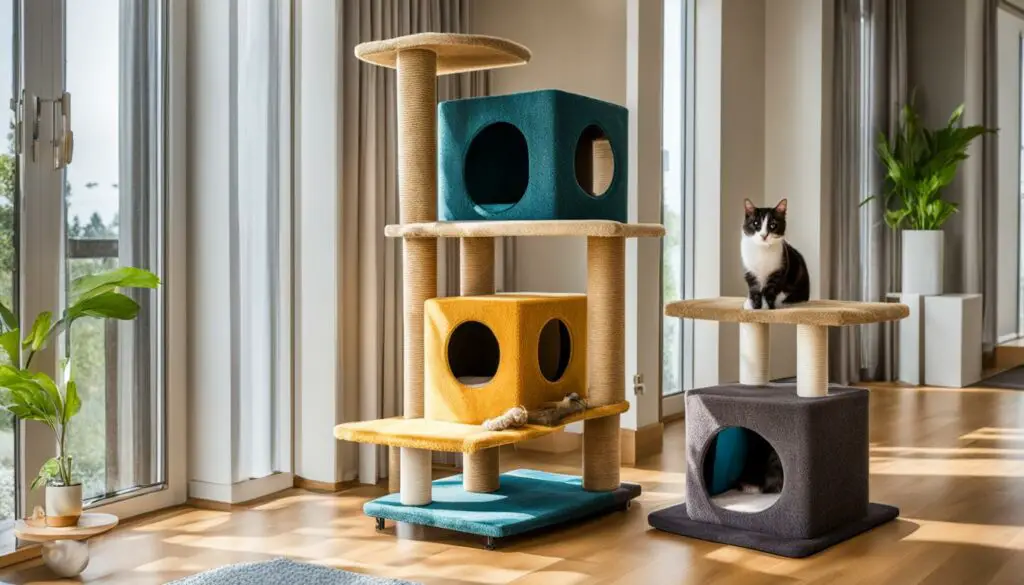
Benefits of Creating New Climbing Spots:
- Redirects scratching behavior away from walls
- Provides vertical and horizontal spaces for cats to explore
- Offers mental stimulation and exercise
- Promotes a healthy and happy environment
Investing in a cat climbing tower like the Freestyle Indoor Cat Tree not only satisfies your cat’s natural instincts but also protects your walls from scratching. By providing them with alternative climbing spots, you can maintain a harmonious living space while ensuring your cat’s well-being. With the right furniture and accessories, creating new climbing spots can be an effective solution to redirecting your cat’s scratching behavior.
Giving More Attention and Exercise
If your cat is scratching the walls out of boredom or a lack of attention, it’s essential to provide them with ample playtime and engage in interactive activities. Cats need both exercise and mental stimulation to keep them happy and fulfilled. By dedicating time each day for play and using positive reinforcement techniques, you can redirect their focus away from wall scratching and onto more appropriate behaviors.
To engage your cat in playtime, try incorporating interactive toys that mimic prey or engage their natural hunting instincts. Toys with feathers, strings, or treat dispensers can keep them entertained and active. Experiment with different types of toys to find what your cat enjoys the most. Remember, cats have different preferences, so what works for one may not work for another.
Another way to provide mental stimulation is through environmental enrichment. This involves creating an engaging environment for your cat with various toys, scratching posts, and climbing structures. Consider adding puzzle toys or hiding treats around the house to encourage exploration and problem-solving. Providing vertical spaces like cat trees or window perches can also give them a sense of security and allow them to observe their surroundings.
Lastly, make sure to offer plenty of positive reinforcement. Cats respond well to praise, treats, and gentle pets, so be sure to reward them when they engage in desired behaviors like using their scratching post or participating in playtime. By combining attention, exercise, and positive reinforcement, you can help redirect your cat’s attention away from wall scratching and foster a happier and healthier bond between you and your furry friend.
Engaging Feline Attention
When it comes to engaging your cat’s attention, there are a few tips to keep in mind. First, schedule regular play sessions that align with your cat’s natural activity patterns. Cats are most active during dawn and dusk, so try to plan playtime during these periods. Secondly, use toys that mimic the movements of prey animals to capture your cat’s interest. Toys with feathers, strings, or small balls that roll and bounce can be particularly engaging.
Additionally, be sure to vary the types of toys you offer to keep things interesting. Some cats may prefer toys that they can bat around, while others may enjoy toys they can pounce on. Interactive toys that require your cat to think and problem-solve, such as puzzle feeders, can also be highly engaging.
Remember, cats are individuals with unique preferences, so it’s important to observe their reactions and adjust your playtime routine accordingly. By providing plenty of attention, exercise, and engaging toys, you can help redirect your cat’s energy and prevent them from scratching the walls.
Table: Engaging Toys for Cat Playtime
| Toy Type | Description |
|---|---|
| Interactive Wand Toys | Wand toys with feathers, strings, or small toys attached that mimic the movements of prey animals. These toys allow for interactive play between you and your cat. |
| Treat Dispensing Toys | Toys that hold treats and release them as your cat plays with the toy. These toys provide mental stimulation and reward your cat’s interactive play. |
| Puzzle Toys | Toys that require your cat to think and problem-solve to obtain treats or reach hidden toys. These toys provide mental exercise and encourage your cat’s natural hunting instincts. |
| Roller Toys | Toys with balls or other objects that can be swatted and chased by your cat. These toys provide physical exercise and can keep your cat entertained. |
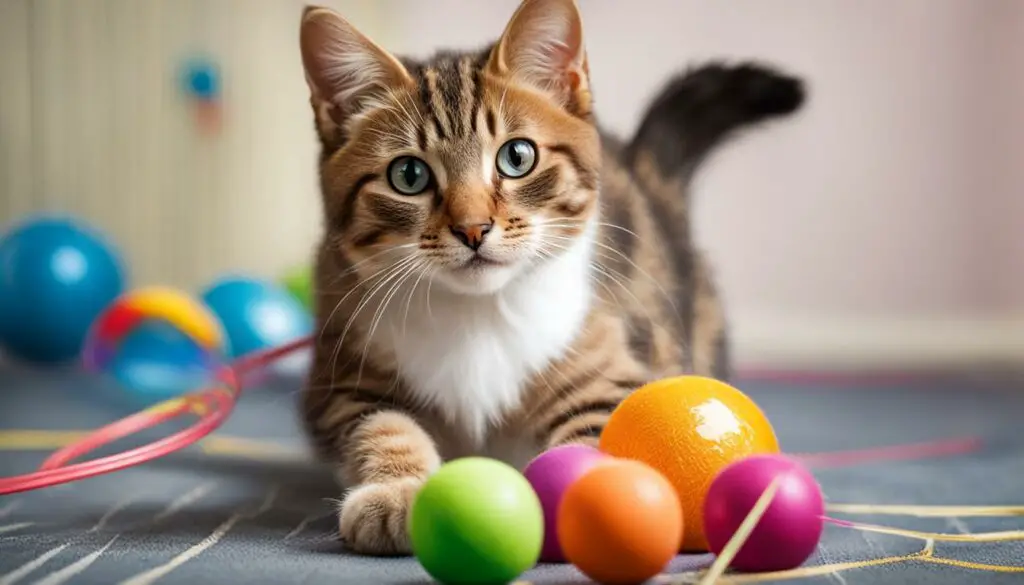
Using a Citrus Solution Spray
One effective and natural way to deter cats from scratching walls is by using a citrus solution spray. Cats have a strong aversion to the smell of citrus, making it an ideal repellent for redirecting their scratching behavior. Simply mix equal parts of citrus juice, such as lemon or orange, with water in a spray bottle and generously apply the solution to the walls or other surfaces where your cat tends to scratch.
The scent of citrus will repel cats and discourage them from scratching the treated areas. It is important to reapply the solution regularly, especially after cleaning or if the smell starts to fade. The citrus solution spray is a safe and non-toxic option that can effectively protect your walls without causing harm to your cat or the environment.
Remember to always test the citrus solution spray on a small and inconspicuous area of your walls before applying it extensively. This will ensure that it does not cause any damage or discoloration to your wall surface.
| Pros | Cons |
|---|---|
| Effective repellent for cats | May need regular reapplication |
| Safe and non-toxic | May not be effective for all cats |
| Natural and environmentally friendly | May have a strong citrus scent |
“I found that using a citrus solution spray was the perfect solution to stop my cat from scratching the walls. The smell of citrus was a strong deterrent, and my cat quickly learned to avoid the treated areas. It’s a safe and effective method that I would recommend to any cat owner struggling with wall scratching behavior.”
Caring for Your Cat with Omlet
When it comes to taking care of your cat, Omlet offers a wide range of products designed to cater to their needs. From stylish and durable cat scratchers to outdoor cat playgrounds, Omlet has everything you need to keep your feline friend happy and engaged while minimizing destructive behaviors like wall scratching.
One popular product offered by Omlet is their selection of cat scratchers. These scratchers are not only functional but also aesthetically pleasing, designed to blend seamlessly with your home decor. Made from high-quality materials, they provide a satisfying scratching experience for your cat while protecting your walls. With different sizes and designs available, you can choose the perfect scratcher to meet your cat’s needs.
In addition to scratchers, Omlet also offers outdoor cat playgrounds. These secure and spacious enclosures allow your cat to explore and play in a safe environment. With multiple levels, platforms, and interactive toys, these playgrounds provide the perfect outlet for your cat’s natural instincts to climb, jump, and explore. Plus, the durable construction ensures they can withstand the elements and provide long-lasting enjoyment for your cat.
By investing in cat care products from Omlet, you can provide your feline companion with the stimulation and enrichment they need to thrive. Whether it’s a scratcher to redirect their scratching behavior or an outdoor playground to satisfy their natural instincts, Omlet has the solutions to keep your cat happy and your walls scratch-free.
| Product | Description | Price |
|---|---|---|
| Omlet Cat Scratcher | A stylish and durable cat scratcher that protects your walls while providing a satisfying scratching experience for your cat. | $29.99 |
| Outdoor Cat Playground | A secure and spacious enclosure with multiple levels, platforms, and toys for your cat to explore and play in a safe outdoor environment. | $399.99 |
Testimonials
“I purchased the Omlet Cat Scratcher for my cat, and I couldn’t be happier with the results. Not only does it protect my walls, but my cat absolutely loves scratching on it!” – Sarah
“The Outdoor Cat Playground from Omlet has been a game-changer for my cat. She spends hours playing and exploring in the enclosure, and I feel confident knowing she’s safe and secure.” – Michael
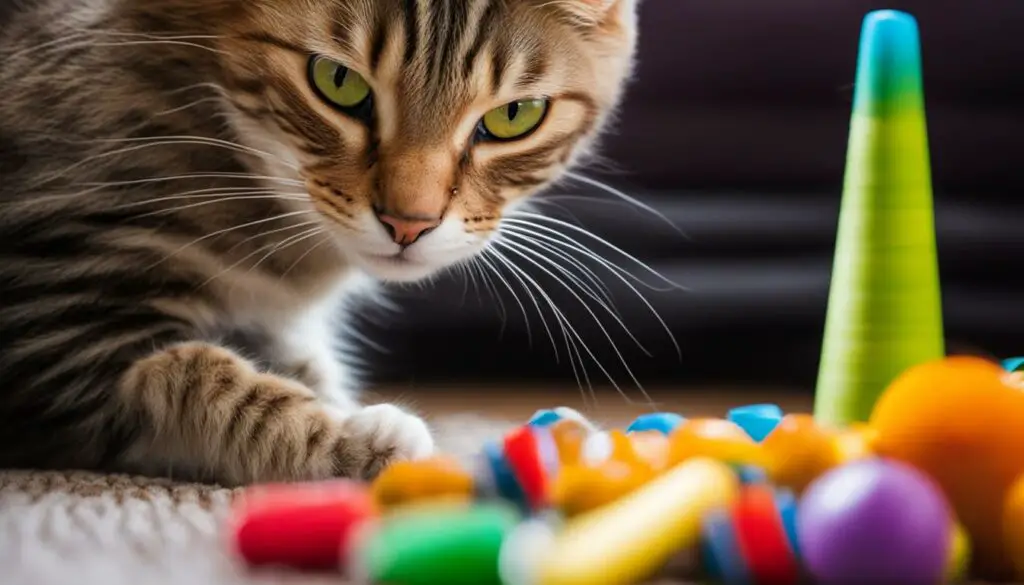
With Omlet’s cat care products, you can provide your cat with the enriching and engaging experiences they need to lead a happy and fulfilling life. Say goodbye to scratched walls and hello to a harmonious home environment for both you and your feline companion.
Understanding Cat Scratching Behavior
Scratching is a natural behavior for cats, serving various purposes that are essential for their well-being. By understanding the underlying motivations behind this behavior, we can effectively address and redirect our cats’ scratching habits.
Cat scratching serves as a means of claw maintenance, allowing cats to shed the outer layers of their claws and keep them sharp. This instinctual behavior helps cats groom themselves and maintain healthy claws. Providing appropriate scratching posts and surfaces can fulfill this need and prevent cats from resorting to scratching walls.
“Cat scratching is also a form of territory marking.” – Dr. Jane Smith, Feline Behavior Specialist
Territory marking is another significant reason why cats scratch. By leaving visible scratch marks and scent marks on surfaces, cats communicate their presence and establish their territory. Understanding this instinctual behavior can help us provide suitable alternatives for cats to mark their territory, such as scratching posts or designated scratching areas.
Muscle Stretching and Instinctual Behaviors
Besides claw maintenance and territory marking, scratching also allows cats to stretch their muscles. Cats have a natural inclination to stretch their bodies, especially after long periods of rest. Scratching provides them with an opportunity to stretch their limbs, back, and torso, promoting flexibility and relieving tension.
Additionally, scratching is an instinctual behavior deeply ingrained in cats. Even indoor cats retain their natural instincts, including the need to scratch on different surfaces. By acknowledging and providing outlets for these instincts, such as scratching posts with various textures, we can effectively redirect our cats’ scratching behavior away from walls and onto appropriate surfaces.
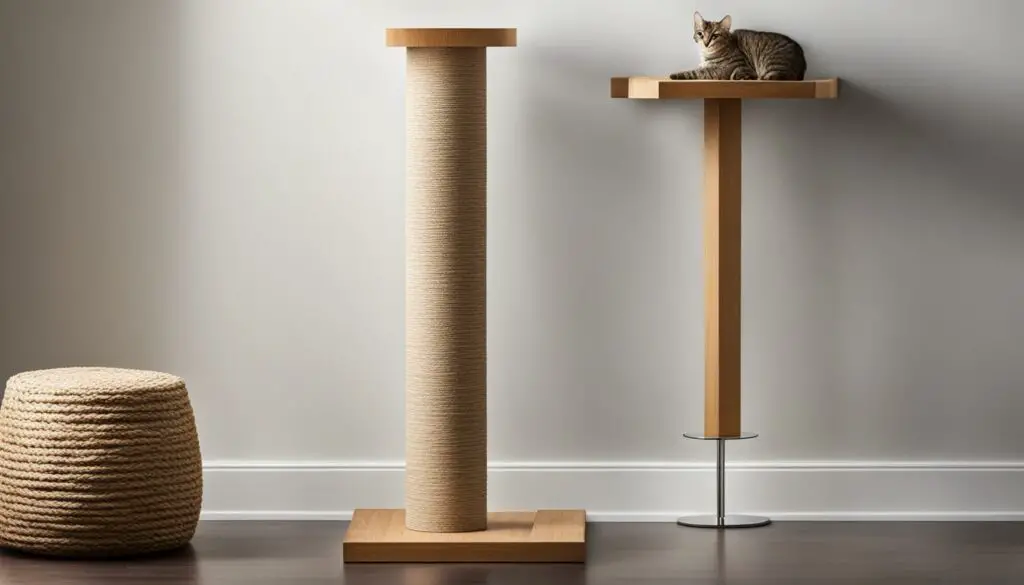
In conclusion, understanding cat scratching behavior is crucial for addressing and redirecting this natural behavior. By providing appropriate alternatives for claw maintenance, territory marking, muscle stretching, and instinctual behaviors, we can effectively prevent cats from scratching walls and create a harmonious living environment for both cats and their owners.
Redirecting Scratching Behavior with Scratch Posts
If you’re tired of your cat scratching the walls, it’s time to provide them with appropriate scratching outlets. One effective solution is to invest in scratch posts that match your cat’s preferences. Cats have unique scratching preferences, such as vertical or horizontal surfaces, and different textures. By observing your cat’s scratching habits, you can choose the right scratch post that will redirect their scratching behavior.
When selecting a scratch post, consider the type of material your cat prefers. Some cats enjoy sisal rope or carpet-covered surfaces, while others prefer cardboard or wood. Providing a variety of scratch posts with different textures can help meet your cat’s scratching needs and prevent them from targeting your walls. Additionally, ensure that the scratch posts are sturdy and stable to withstand your cat’s vigorous scratching.
Position the scratch posts strategically in areas where your cat frequently scratches the walls. Place them near your cat’s favorite resting spots or areas where they tend to mark their territory. By offering an enticing alternative to the walls, your cat will be more likely to engage with the scratch posts instead.
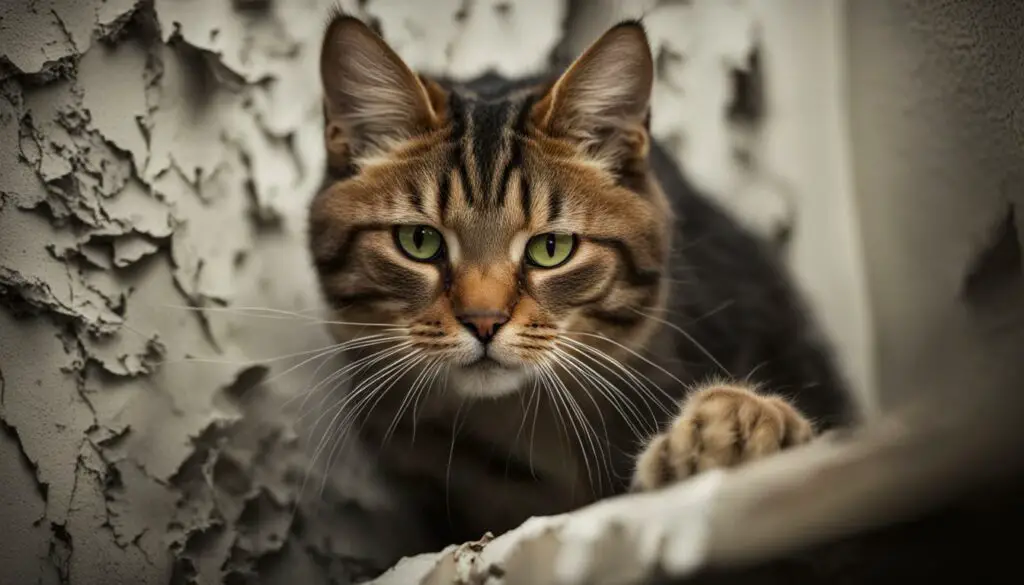
| Scratch Post Type | Features |
|---|---|
| Sisal Rope | Durable and provides a satisfying scratching texture. |
| Carpet-covered | Resembles the texture of walls and can help redirect scratching behavior. |
| Cardboard | Offers a satisfying surface for scratching and is inexpensive to replace. |
| Wood | Provides a sturdy and natural scratching material. |
Remember, simply providing scratch posts may not be enough to effectively redirect your cat’s scratching behavior. Encourage your cat to use the scratch posts by using positive reinforcement. Reward your cat with treats or praise when they use the scratch posts instead of the walls. Over time, they will learn to associate the scratch posts with positive experiences and be more inclined to use them.
By offering appropriate scratching outlets and actively redirecting your cat’s behavior, you can save your walls from further damage and maintain a harmonious living environment for both you and your furry friend.
Making Unacceptable Targets Less Attractive
When it comes to stopping cats from scratching walls, making those surfaces less attractive can be an effective strategy. By implementing aversion therapy, booby traps, deterrents, and odor neutralizers, you can redirect your cat’s attention away from the walls and towards more appropriate outlets for their scratching instincts.
Aversion therapy involves using negative stimuli to discourage cats from scratching walls. One approach is to create booby traps by making noise when the cat attempts to scratch. For example, you can attach empty aluminum cans to strings and hang them near the walls. When the cat scratches, the cans will create a loud noise that startles them, discouraging further scratching.
Another option is to use deterrents that cats find unappealing. These can include sticky tapes or double-sided adhesive sheets placed on the walls. Cats dislike the sensation of their paws sticking to these surfaces, deterring them from scratching. Additionally, you can use products with unpleasant scents, such as citrus sprays or natural repellents, as cats have a strong aversion to certain smells. Apply these deterrents on the walls to make them less appealing to your cat.
| Deterrent Option | Description |
|---|---|
| Sticky Tape | Placing sticky double-sided adhesive tape on the walls creates an unpleasant sensation for cats when they attempt to scratch. |
| Citrus Spray | Using a citrus-scented spray on the walls can act as a natural deterrent, as cats dislike the smell of citrus. |
| Natural Repellent | There are various natural repellents available that can be applied to the walls to discourage cats from scratching. These repellents often contain scents that cats find unpleasant. |
In addition to aversion therapy and deterrents, using an odor neutralizer can help eliminate any lingering scents that may attract your cat to the walls. Cats have a highly developed sense of smell, and by neutralizing odors, you remove one of the reasons they may be drawn to the walls. Look for pet-safe odor neutralizers that are specifically designed for use around cats.
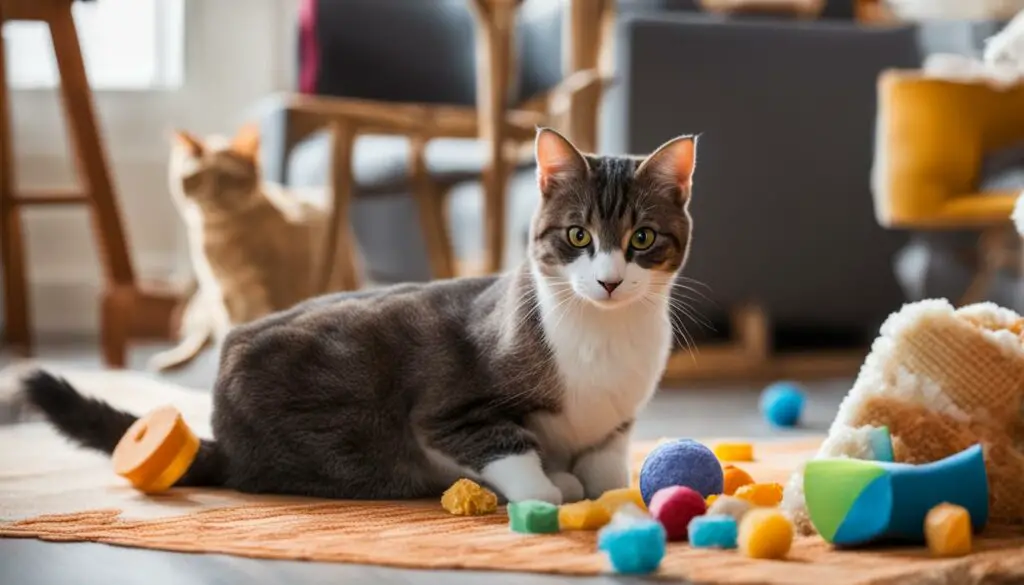
Remember, it’s important to provide alternative scratching options for your cat, such as scratching posts or designated scratching areas. This will give them a proper outlet for their natural scratching instincts, further reducing their desire to scratch the walls.
By utilizing aversion therapy, booby traps, deterrents, and odor neutralizers, you can make the walls in your home less attractive to your cat and redirect their scratching behavior. With consistent training and a bit of creativity, you’ll be able to preserve the beauty of your walls while ensuring your cat’s well-being.
Alternatives for Fabric Chewing and Houseplant Chewing
As a cat owner, you may have encountered the frustrating behavior of fabric chewing and houseplant chewing. While it’s natural for cats to explore their surroundings and interact with different textures, these habits can cause damage to valuable items and potentially harm their health. Fortunately, there are alternatives you can provide to redirect their attention and satisfy their chewing instincts.
Alternative Toys
One effective way to deter fabric chewing and houseplant chewing is to offer a variety of alternative toys that provide a similar tactile experience. Look for toys made specifically for chewers, such as rubber or nylon toys that are designed to withstand a cat’s chewing habits. Additionally, toys with crinkly textures or interactive elements, like treat-dispensing toys, can engage your cat and provide mental stimulation.
Cat-Safe Greens
Cats are known to be attracted to plants, but some houseplants can be toxic if ingested. To satisfy your cat’s desire to chew on greens, consider providing cat-safe plants like cat grass or catnip. Cat grass is a type of grass that is safe for cats to chew on and can help aid digestion. Catnip plants are also a popular choice as they contain a compound that can stimulate your cat’s senses and provide a safe chewing alternative.
By offering alternative toys and cat-safe greens, you can redirect your cat’s chewing behavior away from fabrics and houseplants. Remember to always supervise your cat when introducing new toys or plants to ensure their safety. Providing appropriate alternatives will not only protect your belongings but also keep your furry friend happy and engaged.
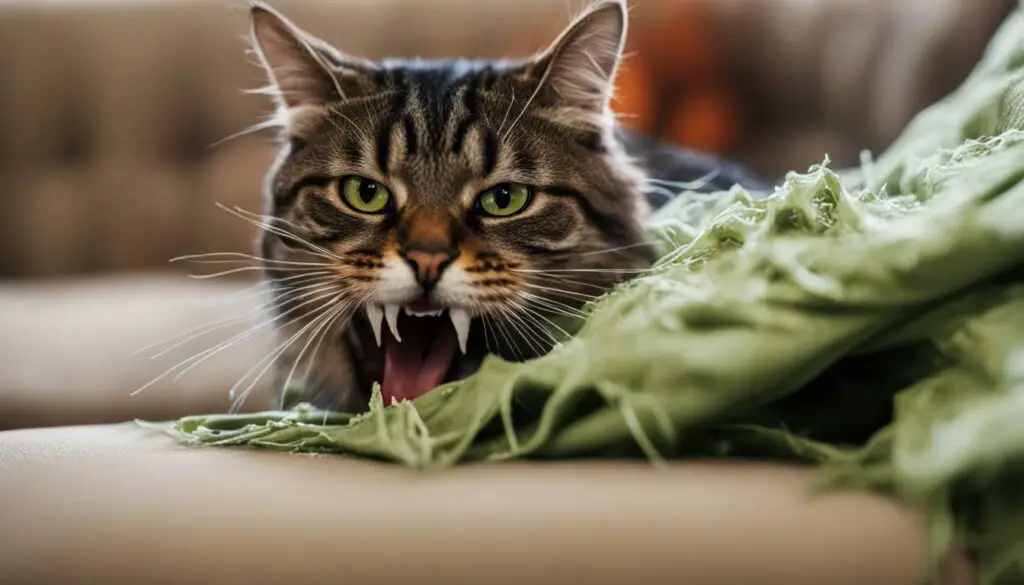
Conclusion
Final Thoughts and Summary:
Understanding the reasons behind your cat’s scratching behavior is the first step to effectively redirecting their habits. By implementing appropriate solutions, you can create a harmonious environment in your home without sacrificing your walls.
Providing your cat with appropriate scratching posts and climbing structures is crucial. Observe their preferences and offer suitable outlets that match their scratching habits. This way, you can discourage them from scratching your walls and redirect their attention to more acceptable alternatives.
Additionally, prioritize playtime and mental stimulation to fulfill your cat’s need for exercise and attention. Engaging in interactive play sessions and offering positive reinforcement will help keep them entertained and prevent boredom-driven behaviors like wall scratching.
Lastly, consider using deterrents and aversion techniques to make wall scratching less attractive. A citrus solution spray can act as a natural repellent, while creating booby traps or using loud noises can discourage the behavior. Remember to make sure the areas where your cat scratches are odor neutralized and covered with materials they find unappealing.
By following these strategies and investing in cat care products that cater to their needs, such as scratchers and outdoor playgrounds, you can provide a stimulating environment that minimizes destructive behaviors. With patience and consistency, you’ll be able to redirect your cat’s scratching habits and maintain a peaceful and scratch-free home.
FAQ
Why do cats scratch walls?
Cats scratch walls for various reasons, including exercise, stretching their bodies, relieving stress, and marking territory.
Why do cats scratch walls after feeding?
Cats may scratch walls after feeding to express dissatisfaction with their food or to mark their territory.
Why do cats scratch walls around the litter box?
Cats may scratch walls around the litter box to indicate the need for cleaning or to engage in natural instincts to cover waste and clean their paws.
How can I redirect my cat’s scratching behavior?
One effective way to address wall scratching is to provide a wall-mounted scratcher or a suitable alternative such as a scratching post. Offering appropriate climbing spots, increasing playtime, using citrus solution sprays, and providing cat care products designed to cater to their needs are also helpful techniques.
How can I make wall scratching less attractive?
There are various strategies to make wall scratching less attractive, including using aversion therapy with loud noises, creating booby traps, applying odor neutralizers, and covering surfaces with materials cats find unappealing.
What should I do if my cat chews on fabric or houseplants?
If your cat chews on fabric or houseplants, provide alternative toys and cat-safe greens to redirect their attention and prevent damage to valuable items or harm to their health.
What is the Omlet cat care product range?
Omlet offers a range of cat care products, including stylish and durable cat scratchers, outdoor cat playgrounds, and other accessories designed to keep cats happy and engaged while minimizing destructive behaviors like wall scratching.
Why is understanding cat scratching behavior important?
Understanding cat scratching behavior is important because it helps cat owners address the behavior effectively and provide appropriate outlets for scratching.
How can I redirect my cat’s scratching behavior with scratch posts?
By observing your cat’s scratching preferences and offering suitable outlets such as carpet-covered posts or posts with different textures, you can discourage wall scratching and redirect their behavior to the appropriate posts.
What can I do to make unacceptable targets less attractive?
Strategies to make unacceptable targets less attractive include using aversion therapy with loud noises or creating booby traps. Applying odor neutralizers and covering surfaces with materials cats find unappealing can also discourage scratching behavior.
What are the alternatives for fabric chewing and houseplant chewing?
To redirect your cat’s attention from fabric chewing and houseplant chewing, provide alternative toys and cat-safe greens that they can chew on instead.
What is the conclusion of this exploration?
By understanding the reasons behind cat scratching behavior and implementing appropriate solutions, cat owners can effectively redirect their cats’ scratching habits and maintain harmony in their homes.

